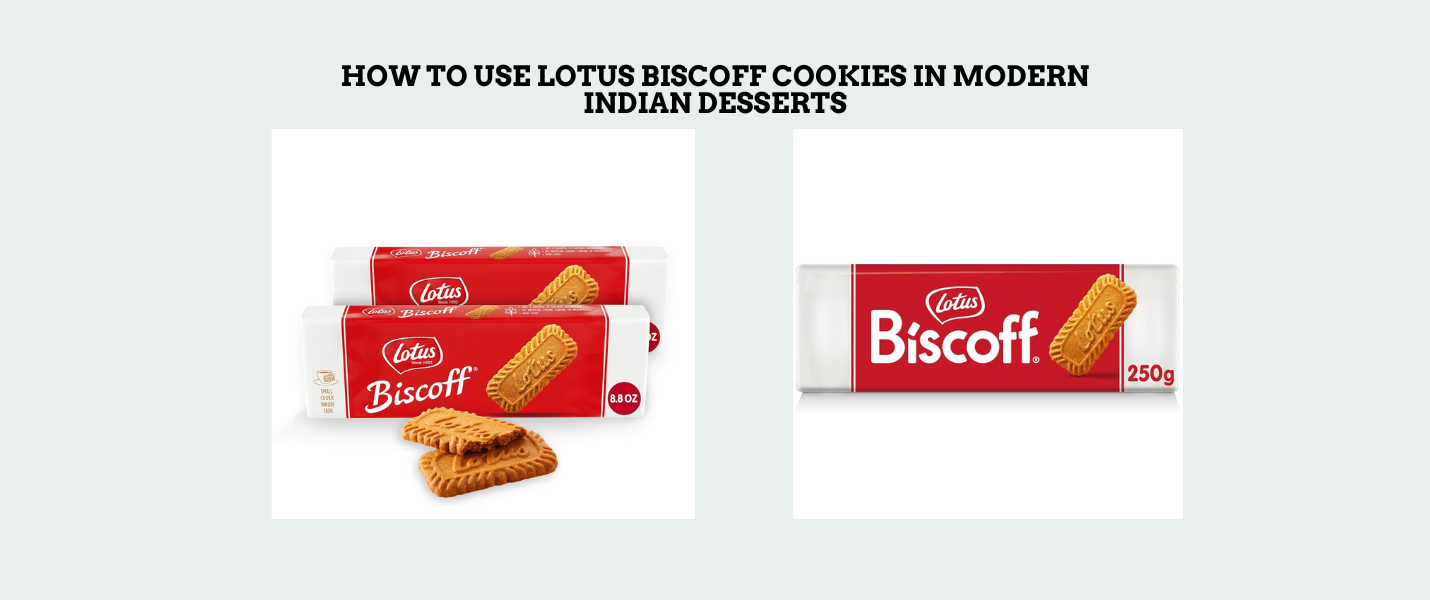

How to Use Lotus Biscoff Cookies in Modern Indian Desserts
Table of Contents
Introduction: The Belgian Cookie That Captured India's Heart
Understanding the Allure of Lotus Biscoff Cookies
2.1. The Story Behind Lotus Biscoff Cookies
2.2. What Are Lotus Biscoff Cookies Made Of?
2.3. The Global Appeal, And Indian Obsession
Why Lotus Biscoff Cookies Work So Well with Indian Desserts
3.1. The Flavor Connection
3.2. The Modern Indian Dessert Revolution
8 Indian Desserts Reinvented with Lotus Biscoff Cookies
4.1. Biscoff Cheesecake Barfi
4.2. Gulab Jamun Biscoff Parfait
4.3. Biscoff Rabri or Basundi
4.4. Biscoff Kheer (Rice Pudding)
4.5. Biscoff Sandesh / Bengali Sweets
4.6. Ice Cream Sundae with Biscoff
4.7. Biscoff Mithai Truffles
4.8. Biscoff Modaks / Laddoos
Technical and Creative Tips, Making Every Dessert Shine
5.1. Biscoff Spread vs. Cookie Crumbs
5.2. Ensuring Shelf Life and Storage
5.3. Pairing Suggestions
Quick No-Bake Recipes with Lotus Biscoff Cookies
6.1. No-Bake Biscoff Barfi
6.2. Instant Biscoff Parfait
6.3. Vegan Versions and Ingredient Substitutions
Nutrition & Health Benefits, Why Choose Lotus Biscoff Cookies in Your Kitchen
7.1. Nutrition Facts of Lotus Biscoff Cookies
7.2. Lotus Biscoff for Allergies and Special Diets
7.3. Data Points and Popularity in India
Lotus Biscoff Cookies and India’s Modern Dessert Culture
8.1. Trends in Bakeries and Home Kitchens
8.2. Entrepreneur Insights
Conclusion: Let’s Make Dessert History, Your Turn to Bake!
FAQs on Lotus Biscoff Cookies and Modern Indian Desserts
10.1. Main Biscoff Ingredients
10.2. Origin of Lotus Biscoff
10.3. What is Biscoff?
10.4. How to Make a Biscoff Latte
10.5. Popular Recipes With Biscoff Spread
10.6. Is Lotus Biscoff Vegan and Allergy-Friendly?
10.7. Using Biscoff Cookies in Indian Mithai
10.8. Storing Lotus Biscoff Cookies and Spread
10.9. Where to Buy Lotus Biscoff in India
10.10. What Makes Lotus Biscoff Unique?
Introduction: The Belgian Cookie That Captured India's Heart
Walk into an Indian home today, and you’re just as likely to spot Lotus Biscoff Cookies alongside a cup of chai as you are at a European café counter. This little caramel-colored treat, famous for its rich flavor and crunchy texture, has become a versatile secret ingredient for home bakers across India. From wedding mithai tables to viral social media recipes, Biscoff’s unique taste promises both nostalgia and innovation, seamlessly blending into our culinary traditions and igniting the current wave of fusion desserts.
But how did this Belgian biscuit, once a coffee-side novelty, become the darling of Indian home chefs and foodies alike? What makes it so irresistible, and how can you use it to transform your favorite desserts into gourmet showstoppers? In this blog, we’ll unravel the story behind Lotus Biscoff, break down its composition, explore why it works so well with Indian sweets, and provide a treasure trove of recipes and tips to inspire your creativity. Let’s dig in!
Understanding the Allure of Lotus Biscoff Cookies
1. The Story Behind Lotus Biscoff Cookies
The tale of Lotus Biscoff begins in 1932 in the quiet town of Lembeke, Belgium, when the Boone family created a spiced, caramel-flavored biscuit designed to be enjoyed with coffee. The name itself is a portmanteau of “biscuit” and “coffee.” Biscoff’s rise from a local bakery treat to a global phenomenon is a testament to its iconic crunch, deeply caramelized flavor, and simple, high-quality ingredients. Even today, Lotus Bakeries remains a family-owned business, with the original recipe at the heart of production.
Fun fact: In the 1980s, Biscoff’s popularity soared in the U.S. thanks to airlines serving them to travelers. The moment you bit in, the fragrance of spice and caramel became part of the travel experience. That same aroma now drifts through Indian kitchens, evoking a sense of adventure and a feeling of home.
2. What Are Lotus Biscoff Cookies Made Of?
At their core, Lotus Biscoff Cookies are a study in simplicity. The classic recipe contains:
- Wheat flour
- Sugar
- Vegetable oils
- Brown sugar syrup
- Sodium bicarbonate (baking soda)
- Soy flour
- Salt
- Cinnamon and spice blend
The cookies are vegan-friendly and do not contain dairy or eggs, making them suitable for a wide range of dietary preferences. The real secret? The generous use of brown sugar syrup for caramelization, along with their signature spice mixture featuring cinnamon as the top note.
When ground and blended, these ingredients create the famous Biscoff spread, a creamy, peanut butter-like alternative that packs an even more concentrated hit of flavor. No wonder you’ll find jars of the spread next to the cookies themselves in Indian supermarkets.
3. The Global Appeal—And Indian Obsession
The flavor of Lotus Biscoff is universally appealing: it’s sweet, but not cloyingly so; spicy, but gently warming; caramelized, but never burnt. Its texture holds up in everything from cheesecakes to shakes, and its robust flavor shines even when combined with strong Indian spices and dairy-based sweets.
In India, Lotus Biscoff Cookies and spreads started as premium imports but quickly became a pantry staple for the savvy and the experimental. The current global trend of “fusion desserts” has taken hold here, with Biscoff being incorporated into cheesecakes, layered with gulab jamuns, or simply ground into crusts for mithai.
Why Lotus Biscoff Cookies Work So Well with Indian Desserts
1. The Flavor Connection
Indian desserts rely on layers of flavor, earthy, floral, nutty, and sweet, often punctuated by aromatic spices like cardamom, saffron, or even cloves.
Biscoff’s caramelization and warmth, coming from brown sugar and cinnamon, nestle naturally among these flavors. Imagine the malai-richness of a kheer or rabri, only deepened by the pleasant bitterness of caramel and a hint of European spice.
Caramelized sweetness: Complements the syrupy nature of classics like gulab jamun and jalebi.
Hint of spice: Lotus Biscoff’s underlying cinnamon profile matches perfectly with Indian cardamom, nutmeg, and cloves.
Crunchy and creamy versatility: Whether used whole, crushed, or blended into a spread, Biscoff adapts to the texture of any sweet, be it firm barfi or soft pudding.
2. The Modern Indian Dessert Revolution
From five-star hotel restaurants to Instagram feeds, “fusion desserts” have become the brightest stars in the Indian culinary world. Our mithaiwallas and home bakers are experimenting boldly, and Biscoff often plays the muse.
Examples:
- Biscoff cheesecake barfi served at weddings
- Biscoff gulab jamun parfaits in cafes
- Biscoff-infused peda and sandesh orders for festivals
Not only does Biscoff introduce new textures and flavors, but it also bridges generations, appealing to both traditionalists and modern food explorers.
8 Indian Desserts Reinvented with Lotus Biscoff Cookies
Let’s turn inspiration into action! Here are several Indian-style treats where Biscoff shines, with technical how-tos and pro tips for perfect execution.
1. Biscoff Cheesecake Barfi
Imagine a base of crisp Biscoff crust beneath a layer of dense, milky barfi, each bite blending caramel, spice, and creamy sweetness.
How to make:
- Crush 10 Lotus Biscoff Cookies finely and mix with 2 tbsp melted ghee to form a base.
- Press into a lined tray and chill for 5 minutes.
- Prepare quick barfi: Cook 1 cup khoya (mawa), 2 tbsp milk powder, and 2 tbsp condensed milk in a pan till a soft fudge texture.
- Spread over the Biscoff base, chill, and cut into squares.
- Garnish: Top with Biscoff crumbs or a thin swirl of Biscoff spread.
Pro Tip: Adjust the sugar in barfi so the Biscoff’s caramel flavor is the star.
2. Gulab Jamun Biscoff Parfait
Gulab Jamun Biscoff Parfait brings together syrupy gulab jamuns, airy whipped cream, and the caramel warmth of Biscoff for a true East-meets-West treat. Layered in clear glasses, the dessert shows off contrasting textures, soft dumplings, silky cream, and crunchy cookie crumbs.
- Slice large gulab jamuns in halves or quarters so each layer fits neatly in the glass.
- Alternate whipped cream, Biscoff spread, and crushed cookies to create distinct, photogenic stripes.
- Drizzle a teaspoon of rose syrup on the final layer for floral depth, then scatter chopped pistachios for colour and crunch.
- Chill at least 30 minutes before serving; the cookies soften slightly, unifying flavours while keeping a pleasant bite.
3. Biscoff Rabri or Basundi
Rabri takes on a new personality with the addition of Biscoff spread, turning a traditional dessert into a modern classic. The caramel and spice notes of Biscoff blend into the thick, sweetened milk, bringing depth and a hint of crunch. When finished with cookie crumbs and nuts, every bite is a symphony of creamy, crunchy, and nutty flavors.
- Stir in 1–2 tablespoons of Biscoff spread per 500ml milk once your rabri is thick and the heat is off or very low.
- Allow the rabri to cool slightly before adding Biscoff to maintain a silky, lump-free consistency.
- Garnish generously with crushed Lotus Biscoff cookies and chopped nuts like pistachios or almonds.
4. Biscoff Kheer (Rice Pudding)
Warm, cardamom-scented kheer gets a delightful upgrade when blended with Biscoff, infusing each spoonful with caramel-spice richness. The familiar creamy texture of rice pudding harmonizes perfectly with the gentle crunch of Biscoff cookie pieces and roasted almonds. Served with a cup of masala chai, this fusion dessert brings together comfort and creativity, making it ideal for festive gatherings or cozy evenings at home.
- After the rice is fully cooked and kheer reaches the desired thickness, stir in 2 tablespoons of Biscoff spread while the mixture is still hot.
- Mix thoroughly until the Biscoff melts and the kheer takes on a caramel hue and subtle spice aroma.
- Top with a generous handful of crushed Biscoff cookies and sliced almonds just before serving for a mix of soft and crunchy textures.
- Pair the kheer with freshly brewed masala chai to enhance both the dessert’s warmth and your dining experience.
5. Biscoff Sandesh / Bengali Sweets
Soft, fresh paneer transforms into a delightful fusion mithai when gently kneaded with the caramel crunch of Lotus Biscoff cookies. This quick treat adds a European twist to the classic sandesh, making it perfect for festive platters or modern gifting.
- Prepare chenna (fresh paneer) by draining and kneading until smooth, as traditionally done for Bengali sandesh.
- Add one to two tablespoons of finely crushed Lotus Biscoff Cookies and mix for uniform flavor and texture.
- Shape into small discs or your preferred sandesh molds, pressing gently for a neat, polished look.
- Garnish each piece with a mini Biscoff cookie or a touch of edible gold foil for a festive, eye-catching finish.
6. Ice Cream Sundae with Biscoff
Creamy vanilla ice cream meets layers of Biscoff spread and fragrant rose syrup in this show-stopping sundae, each scoop delivering richness enhanced by saffron and pistachios. Crushed Biscoff on top adds irresistible crunch and makes every bite both beautiful and satisfying.
- In a tall glass, alternate scoops of vanilla ice cream with generous drizzles of Biscoff spread for bold caramel notes.
- Swirl in rose syrup and scatter a few saffron strands between layers to infuse floral aroma and golden color.
- Sprinkle each layer with chopped pistachios to add nutty crunch and a vibrant green contrast.
- Finish with a hearty topping of crushed Biscoff cookies for visual appeal and a satisfying, layered texture in every spoonful.
7. Biscoff Mithai Truffles
Turn leftover peda or barfi into indulgent Biscoff mithai truffles by blending them with Biscoff spread, creating rich, smooth balls with a deep caramel undertone. These bite-sized treats, coated in Biscoff cookie crumbs, are perfect for festive platters or quick celebrations.
- Mash any leftover peda or barfi thoroughly with a generous spoonful of Biscoff spread until you get a smooth, uniform mixture.
- Form the mixture into small, even-sized balls for easy serving and perfect presentation.
- Roll each ball in finely crushed Biscoff cookies, ensuring a crunchy coating that complements the creamy center.
- Place truffles in mini paper cups or liners for a neat, party-ready look, and serve chilled or at room temperature.
8. Biscoff Modaks / Laddoos
Give classic ladoos or festive modaks a delicious twist by tucking Biscoff spread into their soft centers, creating a surprise burst of caramel flavor in every bite. A finishing dusting of crushed Biscoff cookies adds texture and a beautiful fusion touch.
- Start with freshly made coconut or besan ladoos, gently making a hollow in the center of each.
- Spoon a small amount of Biscoff spread into the cavity, taking care not to overfill.
- Close and reshape the ladoos or modaks, smoothing the surface so the filling stays hidden inside.
- Roll or dust each sweet with finely crushed Biscoff cookies for added crunch and an attractive, festive finish.
Technical and Creative Tips, Making Every Dessert Shine
1. Biscoff Spread vs. Cookie Crumbs
Biscoff products offer home bakers dual versatility, choose the creamy spread for smooth, coherent textures and the cookie crumbs for delightful crunch. Using the spread creates luscious, melt-in-the-mouth layers perfect for cheesecake bases, parfaits, or swirling into kheer and rabri for a caramel finish. On the other hand, cookie crumbs are handy for adding body, crunch, and visual appeal to barfi bases, truffle coatings, and fusion mithai like sandesh and tikkis.
- The spread is ideal for creamy layers in cheesecakes, parfaits, ganache, or as swirls in hot desserts like kheer and rabri.
- Cookie crumbs bring essential texture when used as bases for barfi, as toppings on puddings, or mixed with nut powders to mold sweets.
- Blend cookie crumbs into paneer or khoya for unique fusion sandesh or modaks.
- For party platters, offer sweets coated in both Biscoff spread and cookie crumb for textural variety.
2. Ensuring Shelf Life and Storage
Storage is vital to retaining the taste and texture of Biscoff-infused sweets. Dairy-based fusion treats like rabri parfaits, kheer, or Biscoff cheesecakes should always be refrigerated, keeping them fresh for up to 2–3 days. Drier desserts—such as mawa and Biscoff bars or truffles—fare better and last up to 4–5 days in an airtight container, thanks to lower moisture levels.
- Store dairy-based desserts in airtight containers in the refrigerator and finish within 2–3 days for optimal taste and safety.
- Sweets with mostly mawa and Biscoff (low moisture) can stay fresh in cool, dry pantries for up to 4–5 days.
- Separate layers of desserts with parchment when stacking to keep surfaces pristine.
- Always keep Biscoff spread tightly capped, and cookie packs resealed to avoid staleness.
3. Pairing Suggestions
Pairing Biscoff-based fusion sweets with the right beverage enhances the entire experience. Indian favorites like masala chai, adrak (ginger) chai, or south Indian filter coffee balance the biscuit’s caramel-spice richness. Western pairings, from creamy cappuccino to chilled affogato or traditional cold milk—also bring out new facets in your desserts.
- Serve Biscoff barfi with masala chai, kheer parfait with adrak chai, or cheesecake with strong filter coffee for a warming, comforting touch.
- Western coffee drinks like cappuccino, espresso, or affogato (espresso with ice cream) make Biscoff sweets ideal for brunch spreads.
- Cold milk is a great option for children or those who prefer milder pairings.
- For party settings, create a platter with assorted Biscoff sweets and suggest a “chai and coffee pairing” for guests to sample and enjoy.
Quick No-Bake Recipes with Lotus Biscoff Cookies
1. No-Bake Biscoff Barfi
Ingredients:
- 1 cup khoya (mawa)
- 3 tbsp Biscoff spread
- 10 Lotus Biscoff Cookies (crushed)
- 2 tbsp condensed milk
Method:
- Gently warm khoya and condensed milk on low flame.
- Add Biscoff spread, mix to a smooth fudge.
- Press into a tray lined with crushed Biscoff cookies.
- Chill for 1–2 hours, cut and serve.
Chefspoint Pro Tip:
All ingredients, including Lotus Biscoff Cookies, Biscoff spread, and premium baking essentials, are in stock at Chefspoint for quick home delivery across India.
2. Instant Biscoff Parfait
Ingredients:
- 2–3 gulab jamuns (halved or quartered)
- 3 tbsp Biscoff spread
- 5 Lotus Biscoff Cookies (crushed)
- Chopped nuts (optional)
Layering:
- Spoon crushed Biscoff into glasses.
- Add a layer of gulab jamun, drizzle with Biscoff spread.
- Repeat, then top with chopped nuts.
Vegan version:
Use coconut or almond milk-based vegan khoya and dairy-free whipped topping.
Nutrition & Health Benefits—Why Choose Lotus Biscoff Cookies in Your Kitchen?
A serving of two Lotus Biscoff Cookies contains approximately:
- Calories: 75 kcal
- Carbohydrates: 12g
- Sugars: 6g
- Fat: 3g (mostly unsaturated)
- Fibre: 0.3g
They are cholesterol-free, lactose-free, and contain no artificial colors or preservatives, making them a suitable treat for kids, vegetarians/vegans, and fitness-minded folks.
Lotus Biscoff spread also offers a peanut butter alternative for those with nut allergies (always check individual packaging for updates).
Data Point:
Over 6 billion Biscoff cookies are made annually, and their popularity doubles every year in India thanks to viral recipes and their compatibility with Indian and fusion desserts. Their shelf-stability and ease of use encourage creativity in urban and rural kitchens alike.
Lotus Biscoff Cookies and India’s Modern Dessert Culture
Biscoff-based desserts are gaining real traction at Indian bakeries, mithai shops, and e-commerce platforms. From children’s birthday cakes smothered in Biscoff spread to Diwali gift boxes filled with Biscoff modaks, their cultural impact is undeniable.
Many food entrepreneurs cite:
- Affordability: A pack of Biscoff cookies is price-competitive with imported chocolate or cheeses.
- Versatility: No special equipment or skills needed; they’re ready-to-use.
- Social Media Appeal: The caramel color and glossy spread make for viral, attractive posts.
- Accessibility: Now widely available online at Chefspoint, in major city grocers.
Conclusion: Let’s Make Dessert History—Your Turn to Bake!
Lotus Biscoff Cookies are more than a snack; they’re a game-changing ingredient for anyone passionate about Indian sweets and modern desserts. Their caramel richness, complex spice, and instant versatility help you create Instagram-worthy treats and timeless classics alike.
Baking for the first time? Stock up at Chefspoint.in, India’s trusted source for authentic Biscoff and premium baking ingredients. Try these ideas, create your own, and be sure to share your Biscoff dessert stories—because India’s next dessert revolution could begin in your kitchen!
FAQs on Lotus Biscoff Cookies and Modern Indian Desserts
1. What are the main Biscoff ingredients?
Lotus Biscoff ingredients include wheat flour, sugar, vegetable oils, brown sugar syrup, baking soda, soy flour, and a select blend of spices like cinnamon, giving them their unique caramelized flavor.
2. What is the Lotus Biscoff?
Lotus Biscoff's origin traces back to Belgium, where these cookies were first crafted in 1932 to pair with coffee. The name Biscoff combines "biscuit" and "coffee" to highlight its purpose.
3. What is Biscoff?
Biscoff refers to caramelized spiced biscuits from Belgium, known for their crunchy caramel texture. The family includes cookies and Biscoff spread, both used in a variety of desserts.
4. How do you make a Biscoff latte?
A Biscoff latte blends hot espresso and milk with a spoonful of Biscoff spread. This creates a creamy drink with signature Lotus Biscoff ingredients, perfect for pairing with cookies or Indian sweets.
5. What are some popular recipes with Biscoff spread?
Recipes with Biscoff spread include Biscoff cheesecake barfi, Biscoff parfait with Indian sweets, and instant no-bake Biscoff barfi. Add a swirl or layer of Biscoff spread to make fusion desserts at home.
6. Is Lotus Biscoff vegan and allergy-friendly?
Yes, Lotus Biscoff Cookies are vegan, containing no egg or dairy. However, they contain wheat and soy, so individuals with those allergies should check the packaging to ensure safety before consuming.
7. Can Lotus Biscoff cookies be used in Indian mithai?
Absolutely! Crushed Biscoff cookies create great crusts for barfi, cheesecake barfi, and as a crunchy topping on rabri, kheer, or even Sandesh, adding caramel flavor and a fusion twist to classics.
8. How should I store Biscoff cookies and spread?
Store Lotus Biscoff cookies in an airtight container, away from heat and humidity. Biscoff spread should be tightly closed, refrigerated after opening, and used within a few weeks for best freshness.
9. Where can I buy authentic Lotus Biscoff products in India?
You can buy authentic Lotus Biscoff cookies and Biscoff spread at premium grocery stores, major supermarkets, and online platforms like Chefspoint, which guarantee quality and doorstep delivery across the country.
10. What makes Lotus Biscoff cookies different from other biscuits?
Lotus Biscoff cookies are unique for their deep caramelized flavor, crisp texture, and spiced undertones from cinnamon, setting them apart from regular Indian biscuits and making them ideal for fusion desserts.
Share views on How to Use Lotus Biscoff Cookies in Modern Indian Desserts
Please keep your views respectful and not include any anchors, promotional content or obscene words in them. Such comments will be definitely removed and your IP be blocked for future purpose.
Blog Categories
Blog Tags
 10th Sep 2025
10th Sep 2025
 13th Oct 2025
13th Oct 2025
 6th Aug 2025
6th Aug 2025
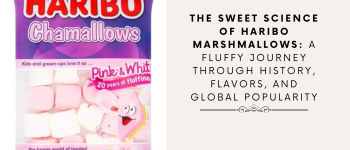 23rd Dec 2024
23rd Dec 2024
 10th Nov 2025
10th Nov 2025
 9th Sep 2025
9th Sep 2025
 13th Oct 2025
13th Oct 2025
 13th Oct 2025
13th Oct 2025
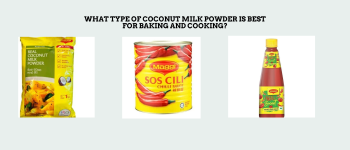 28th Dec 2024
28th Dec 2024
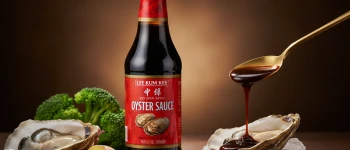 4th Oct 2025
4th Oct 2025
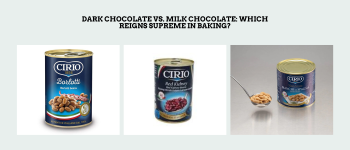 16th Oct 2024
16th Oct 2024
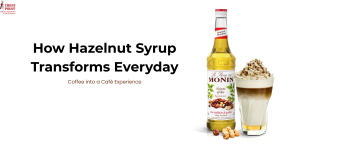 10th Nov 2025
10th Nov 2025
 7th Dec 2024
7th Dec 2024
 10th Sep 2025
10th Sep 2025
